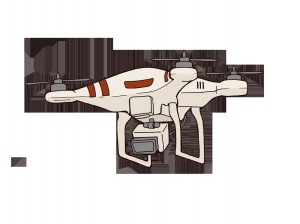
It won’t be long until driver-less cars will be zooming the highways picking up the fixed-gear, ever-juvenile, bearded, failure to launch generation, known as the Millennials.
While this generation is so often criticized for their lack of ambition, the media fails to realize we are now eight years into the worst recession since the Great Depression. And the folks under the age of 38 are faced with ever increasing amounts of student loans and government debt. They also see something wrong in the ever-increasing corporate-dominated economy. Perhaps they have reason to be skeptical of the status quo.
While a majority of millennials haven’t adopted the same priorities as earlier generations such as picking a vocation and sticking with it for decades— they are amazingly connected and they have adopted Instagram, Snapchat, WhatsApp and Beme which are essentially useful means to promote each other’s ideas and business ventures and favorite things outside of corporate channels. They are very quick to adapt to changes in technology which makes them far less dependent upon corporations, degrees and set vocations for income.
Consider Uber and AirB&B: These two billion dollar companies, started by millennials, basically crowd-sourced expensive assets millennials would prefer to not own (cars and homes). The lack of ownership of these major items is liberating for millennials. It allows them to be unfettered to any one location, job, car payment or “thing”. Simplicity is key, a lack of want and fewer things cluttering space makes life more of an adventure rather than a chore.
This month Utah Stories will be covering online a series of technological innovations and how they impact our everyday life.
Drones
 For better and for worse drones will be flying around more often in our canyons, trails, lakes and recreation areas. As we have seen the growth of GoPro, more people want to film their adventures and playback and share their experiences with their friends via social media. Drones with cameras can be purchased for as little as $500, and very soon people will be able to toss a drone in the air and simply tell it to follow them and video record their every move. These will be highly annoying but amazing in their ability to capture action (similar to the advancements in NFL broadcasting since the introduction of the wired cameras). The FAA has not granted permits to drones flying in cities making short deliveries, as Amazon hopes to use them. But like driverless cars and the Internet, lawmakers will likely bend to make the technology available to the masses.
For better and for worse drones will be flying around more often in our canyons, trails, lakes and recreation areas. As we have seen the growth of GoPro, more people want to film their adventures and playback and share their experiences with their friends via social media. Drones with cameras can be purchased for as little as $500, and very soon people will be able to toss a drone in the air and simply tell it to follow them and video record their every move. These will be highly annoying but amazing in their ability to capture action (similar to the advancements in NFL broadcasting since the introduction of the wired cameras). The FAA has not granted permits to drones flying in cities making short deliveries, as Amazon hopes to use them. But like driverless cars and the Internet, lawmakers will likely bend to make the technology available to the masses.
Driverless Cars
There are already cars driving around California streets without drivers. The technology for producing these cars has been around for awhile. In 2016 Tesla Motors is introducing a car that can be set essentially on autopilot on freeways. Lawmakers are already reacting in other countries. These vehicles will be banned in Japan unless Tesla disables this feature. Japanese lawmakers do not believe these cars, designed for American-style freeways, will work on their windy and narrow expressways.
Yet autonomous vehicles can already handle the most severe driving conditions and do a better job of navigating the harsh realities than humans. As a result of autonomous vehicles there will be far fewer vehicular fatalities and more safety on the roads for everyone. UBER has said they will be releasing a fleet of autonomous vehicles to serve as the next generation cabs. Car ownership will no longer be mandatory as services will allow more subscribers to simply summon a vehicle to pick them up and take them where they need to go. This will have a huge impact on traffic, public transportation and transit. While driverless is highly political and controversial, implemented right, these vehicles will have a huge impact towards saving the lives of teenagers and minimizing risks on the roads.






